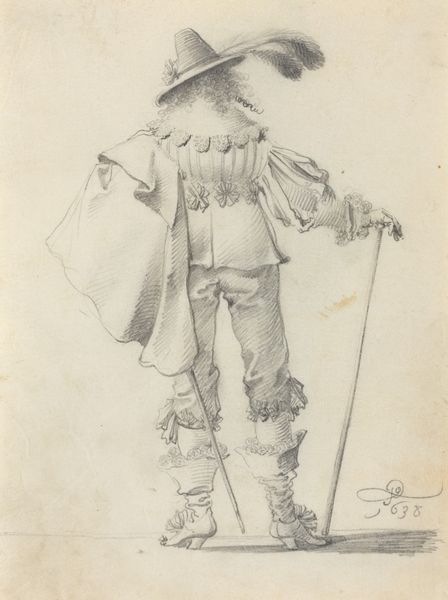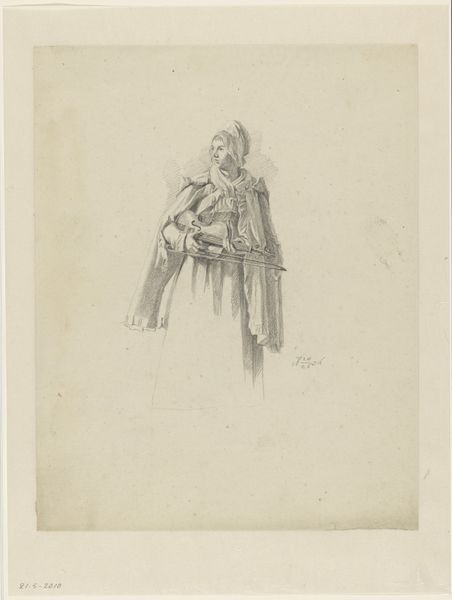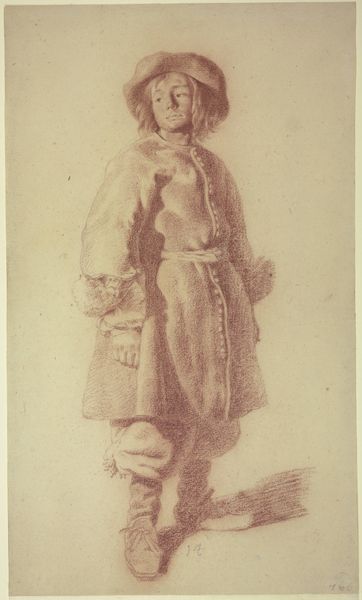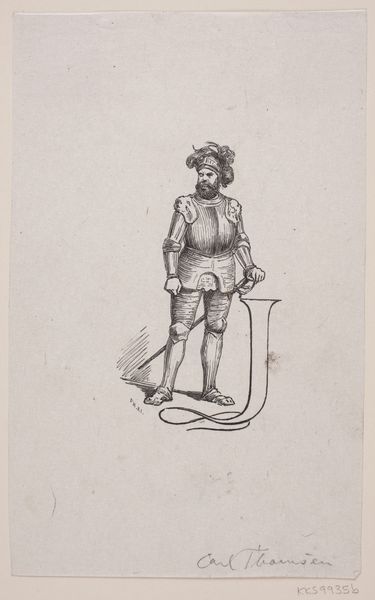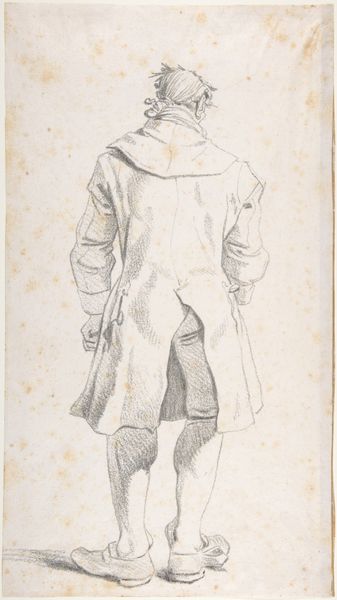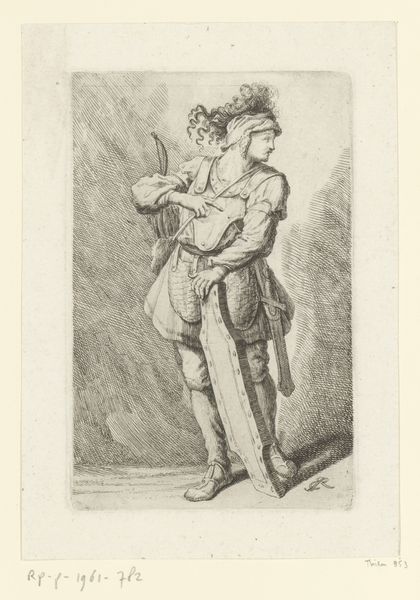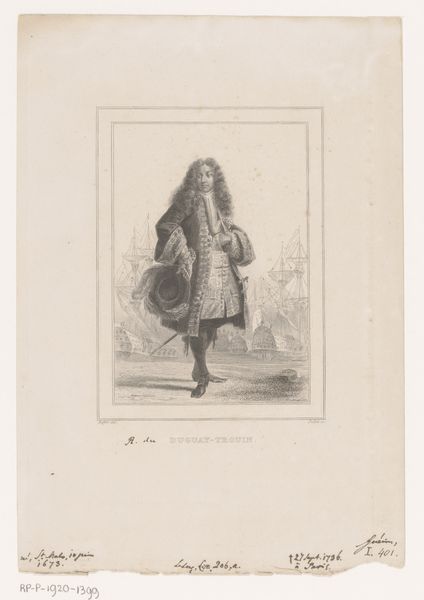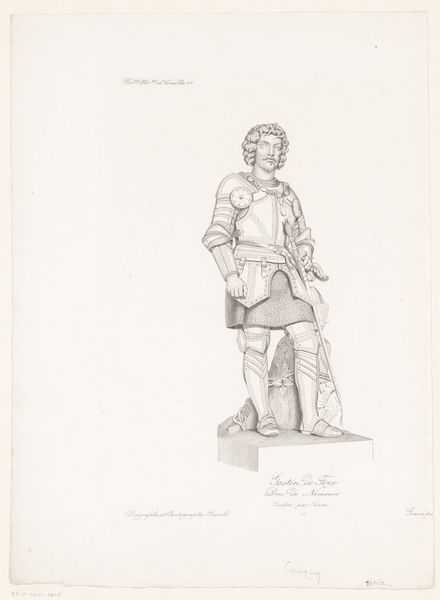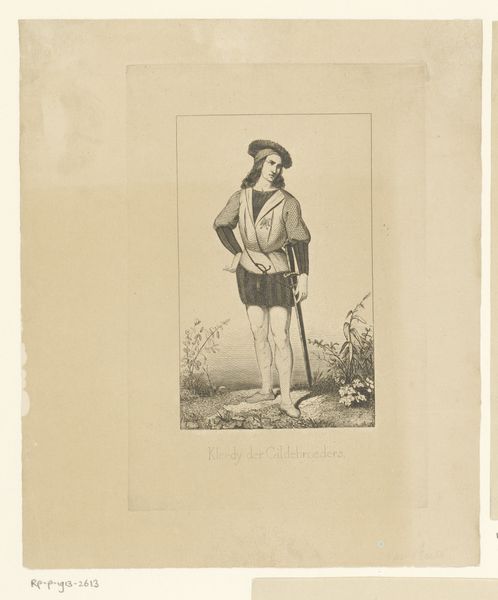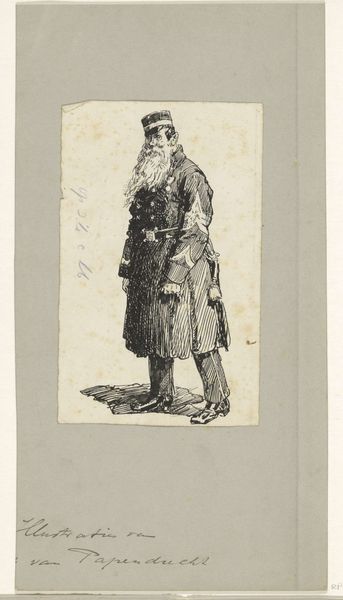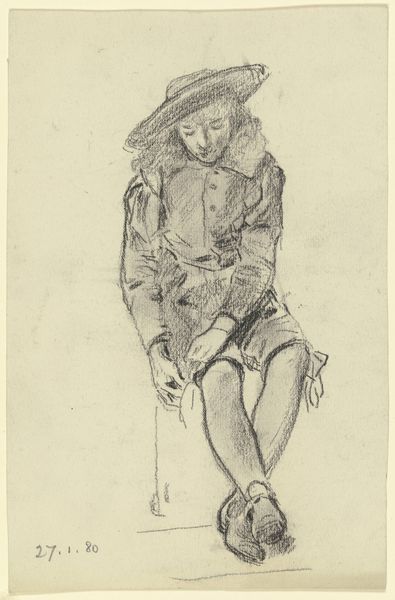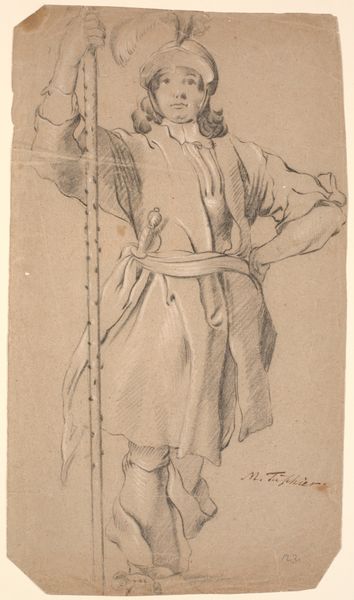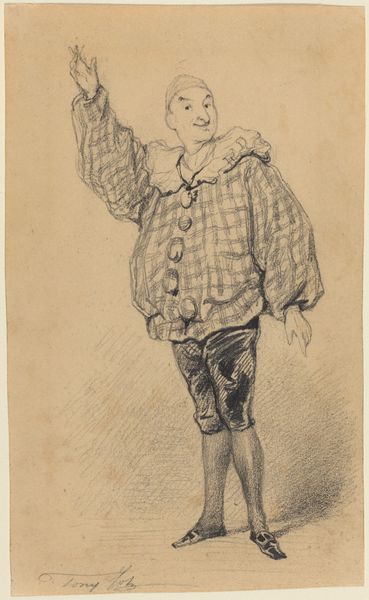
Fotoreproductie van een tekening, voorstellende een jonge toneelspeler in pagekostuum 1890
0:00
0:00
drawing, pencil
#
portrait
#
pencil drawn
#
drawing
#
pencil sketch
#
pencil
#
genre-painting
#
academic-art
#
realism
Dimensions: height 244 mm, width 176 mm
Copyright: Rijks Museum: Open Domain
Curator: Here we have an intriguing drawing from 1890 titled "Fotoreproductie van een tekening, voorstellende een jonge toneelspeler in pagekostuum," attributed to F.A. Dahlström. The medium is listed as pencil. Editor: My immediate impression is one of delicacy. The fine pencil work lends itself well to the youthfulness of the subject. There is an air of hesitant anticipation about the boy. Curator: Precisely. The artist employs a sophisticated academic style with touches of realism. Consider the delicate rendering of light and shadow that defines the subject's youthful face and the luxurious textures of his theatrical costume. The composition adheres to a classical portrait structure. Editor: Yes, the clothing is quite symbolic. The pageboy attire links to a history of youthful figures, often at court or in theatrical productions, signaling innocence but also a certain performative role. Note the object he carries. Curator: Good eye. We should describe it to the audience; the young boy holds a hat, and resting on it, is an intriguing vessel of sorts. How does that resonate? Editor: The vessel, possibly for collecting alms or donations, might suggest themes of charity or service, roles often associated with idealized youth. There is, as well, the idea that the object acts as the symbolic burden the youth must bare. His formal dress reinforces a cultural moment, representing a bridge between childhood innocence and assumed, oncoming responsibility. Curator: It also works within the piece's structural composition, drawing the viewer's eye back into the center of the work from his face. The diagonal lines created by his posture and the vessel in hand create an active yet contained space, almost architectural. The work then uses itself in its own visual understanding. Editor: An astute observation. Perhaps this is meant to also represent a larger ideal: a vision of societal obligation rendered through idealized childhood, prompting emotional connection through recognized symbolism. Curator: Ultimately, I find this work powerful through its visual structure, a semiotic framework rendering an ideal. Editor: And I believe its power comes from its culturally-resonant and emotionally affecting symbolism, offering a unique window into its period.
Comments
No comments
Be the first to comment and join the conversation on the ultimate creative platform.
